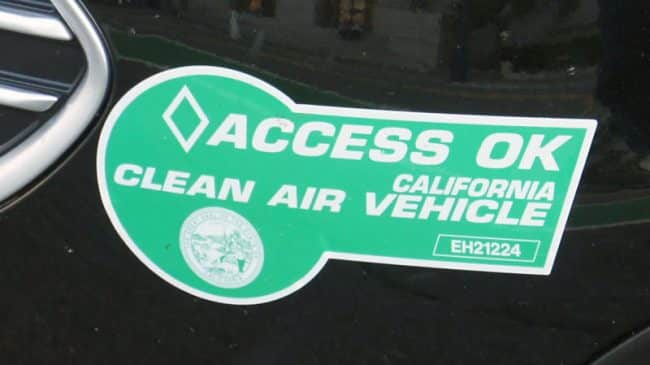Introduction
Manufacturers and importers of vehicles sold in the U.S. are subject to federal fuel economy and greenhouse gas (GHG) emission standards. In addition, California and nine other states have imposed more-stringent standards and require a minimum proportion of vehicles to have “zero” emissions.
The stated objectives of Corporate Average Fuel Economy (CAFE) standards are: (1) to reduce fuel consumption and (2) to reduce greenhouse gas (GHG) emissions. This brief considers the extent to which the standards are likely to achieve these objectives, the relative importance of achieving such objectives compared with other possible environmental objectives, and more cost-effective alternative policies.
CAFE and ZEV Standards
CAFE standards were first introduced in 1978 and new standards have been implemented at various intervals since then. In 2012, the National Highway Transportation and Safety Administration (NHTSA) and the Environmental Protection Agency (EPA) issued new CAFE and GHG emission rules for vehicles manufactured in years 2017–2025. Under these rules, fleetwide average fuel economy for passenger cars rises to 39.6 mpg in 2017 (from 38.2 mpg in 2016) and then incrementally to a minimum of 55.3 mpg in 2025. For light trucks, minimum fuel economy rises to 29.1 mpg in 2017 (from 28.9 mpg in 2016) and then incrementally to 39.3 mpg in 2025. These minimum fuel economy standards are based on the maximum vehicle footprint in each category: fleets with smaller average vehicle footprints are required to meet stricter standards.
Under the GHG emission rules in the 2017–2025 standards, manufacturers may offset other efficiency improvements, such as in air conditioning systems, thereby reducing the minimum effective fuel efficiency for passenger vehicles in 2025 to 49.6 mpg. Moreover, manufacturers may count each electric and plug-in hybrid vehicle as more than one effective vehicle: for plug-in hybrids, this multiple starts at 1.6 in 2017 and declines to 1.3 in 2021; for electric vehicles, the multiple is 2 in 2017, falling incrementally to 1.5 in 2021.
Also in 2012, California’s Air Resources Board adopted the Advanced Clean Cars program, which created standards for new vehicles in California through 2025. A key provision of the program requires that, starting in 2018, major motor vehicle manufacturers sell a minimum proportion of “Zero Emission Vehicles” (ZEVs—i.e. electric cars) or combination of ZEVs and “Transitional Zero Emission Vehicles” (TZEVs—i.e. plug-in hybrids). For model year 2018, the minimum is 4.5%, including at least 2% ZEVs. This rises annually reaching 22% in 2025, of which at least 16% must be ZEVs. California was permitted to implement these stricter standards under a waiver granted by the Environmental Protection Agency. Other states have been permitted to adopt the same standards as California and so far nine additional states have done so, namely: Connecticut, Maine, Maryland, Massachusetts, New Jersey, New York, Oregon, Rhode Island and Vermont.
Full Brief – CAFE and ZEV Standards: Environmental Effects and Alternatives

